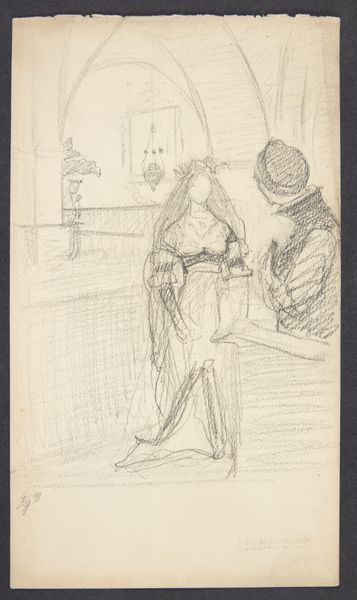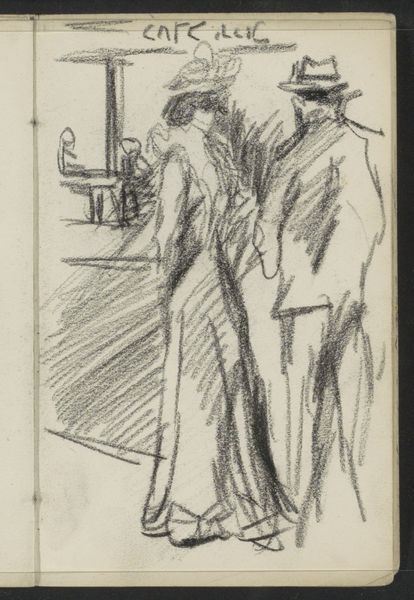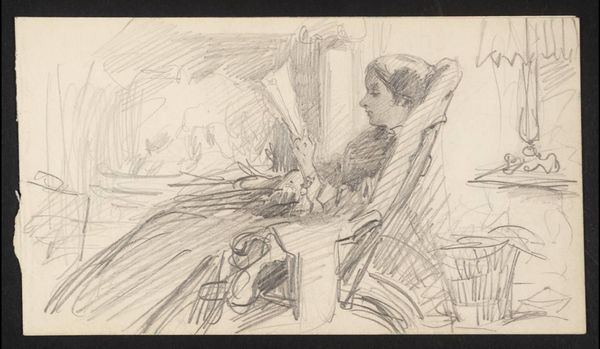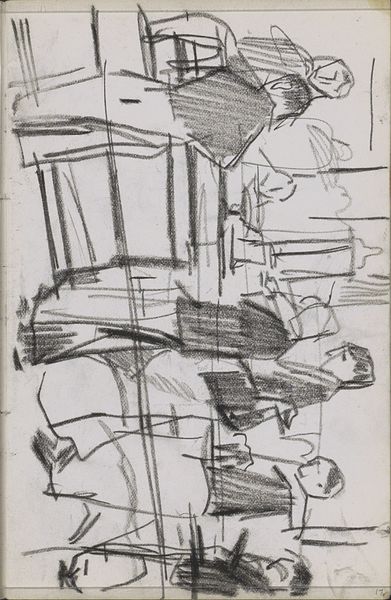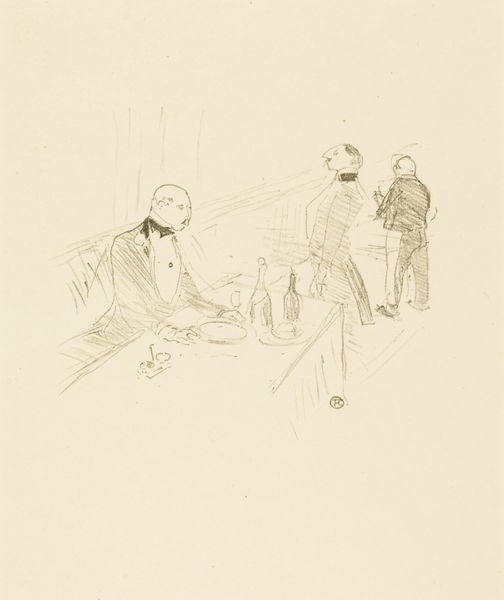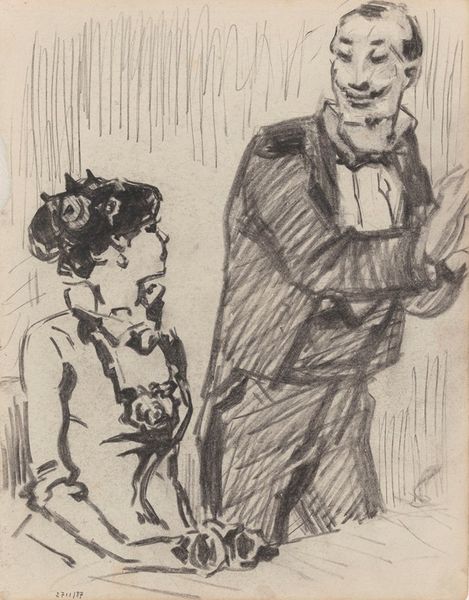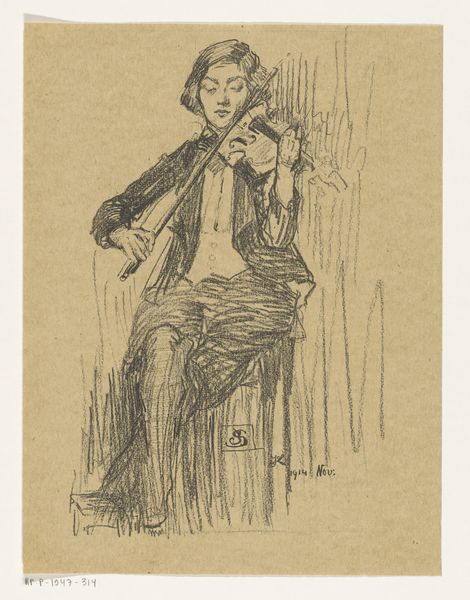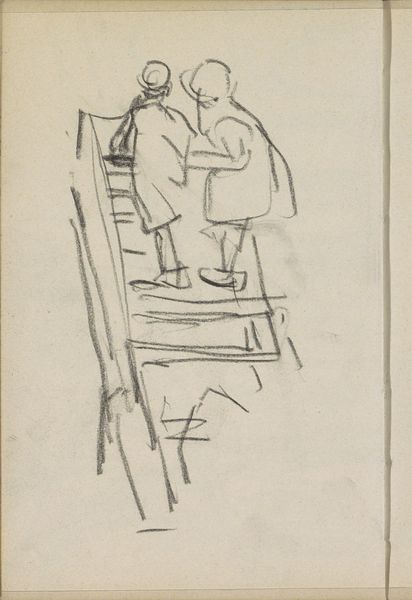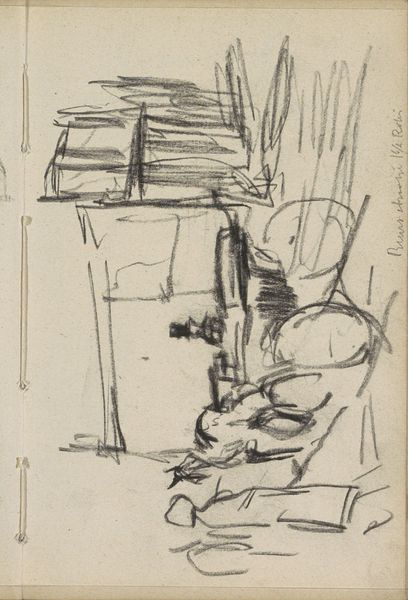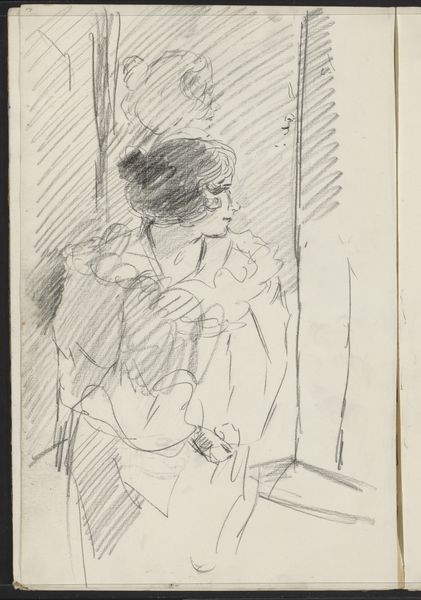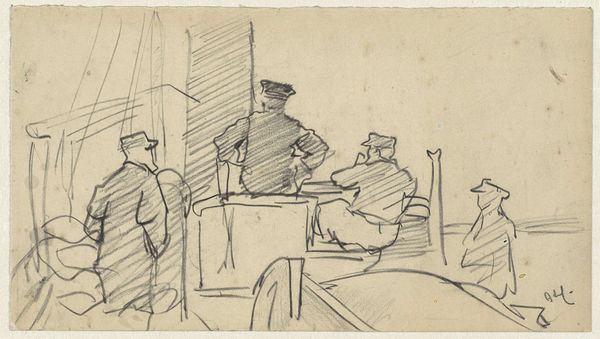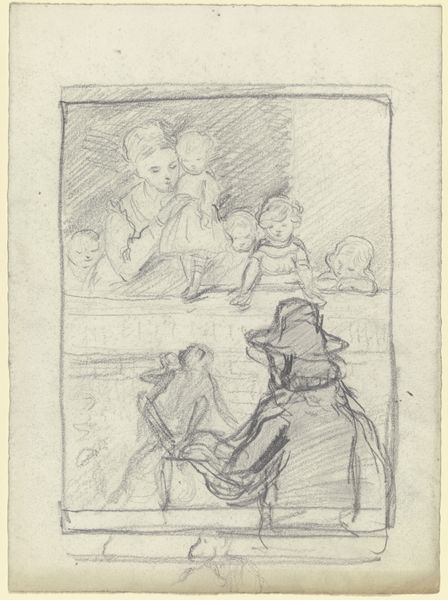
Cover for "La tribu d'Isodore" (Couverture pour "La tribu d'Isodore") 1897
0:00
0:00
drawing, lithograph, print, ink
#
portrait
#
drawing
#
lithograph
# print
#
caricature
#
ink
#
cityscape
#
post-impressionism
Copyright: National Gallery of Art: CC0 1.0
This cover for "La tribu d'Isodore" was made by Henri de Toulouse-Lautrec using a lithographic crayon, transferred to stone, and printed on paper. Lautrec's choice of lithography for this cover reflects the rise of mass production and its impact on the art world. Lithography allowed artists to create multiple copies of their work efficiently, blurring the lines between fine art and commercial illustration. The artist’s hand is evident in the sketch-like quality of the lines, lending a sense of immediacy to the image. The subject matter - a bourgeois man in a carriage - speaks to the social context of the late 19th century. The man's pose and attire suggest wealth and status, but Lautrec's loose drawing style hints at a critical perspective. The artist challenges traditional artistic values by embracing printmaking and addressing themes related to class and consumer culture. Lautrec's print represents a shift in artistic practice, where materials and processes are not just means to an end, but integral to the meaning of the work itself.
Comments
No comments
Be the first to comment and join the conversation on the ultimate creative platform.

